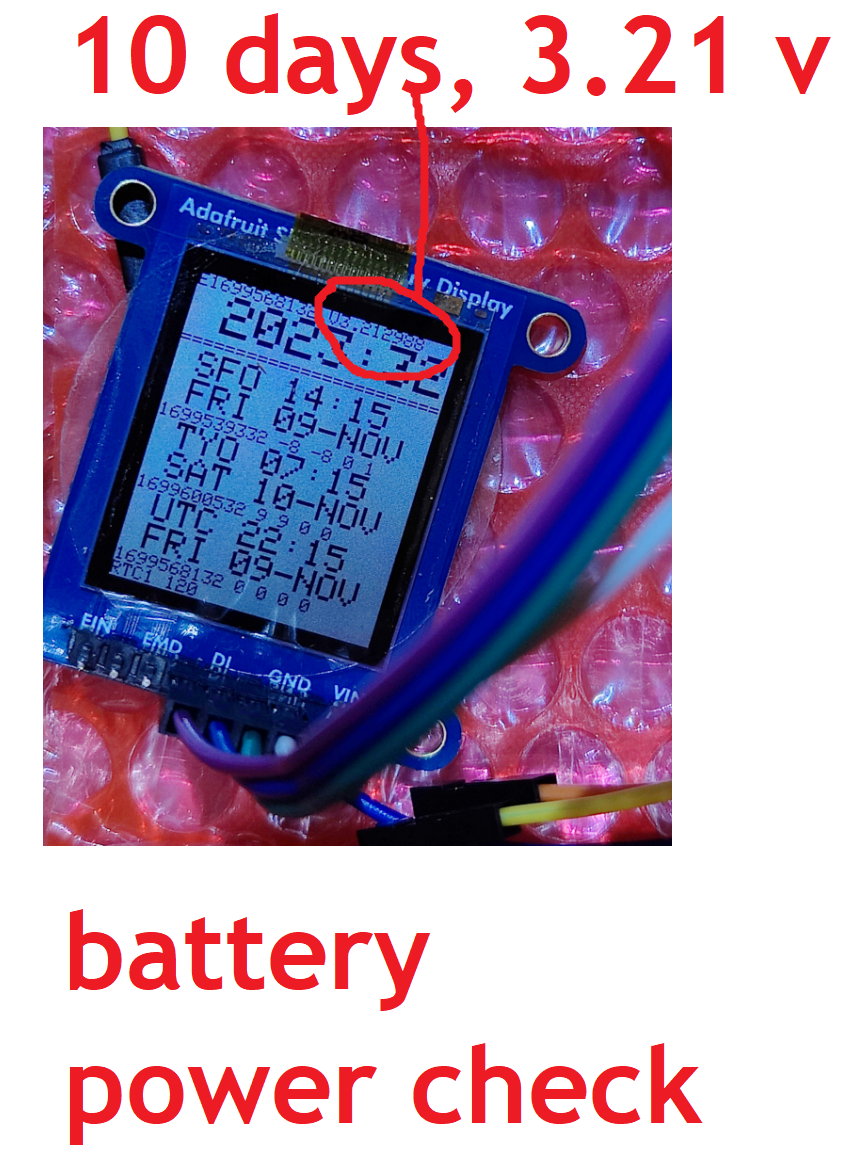I left one setup in a box for 10 days, with BLE advertising, this is the latest.
The 200mA battery voltage is a robust 3.21 volts. I'm very happy to report that my original estimates are holding up. I feel confident that after I optimize the hardware and the code I can reach 10uA average to achieve 2 years on a small coin battery and 10 years on a large one.
Also, the time is keeping pretty well, we are less than one second off my citizen GPS-adjusted watch, which also could be due to me fat-fingering the epoch time, so the 5ppm TCXO I selected is actually working well with the NRF52. I was really worried, because building a real-time clock is somewhat of a black art, and usually everyone goes for an external RTC, while I went full native and designed my own circuit with hand-picked components and wrote my own code around the (sorry Nordic!) crappy real-time counter, yeah, you heard me right, NRF52 doesn't have a real-time clock but a real-time COUNTER, lol. So I ended up using the counter to literally write my own time real clock to step around all that, what a doozy.
The upside is, we go back to power consumption, we don't need an external RTC! Less components, more power! Well, less power but more saved power, that is.
I mean, seriously, why do people need external RTC components, that's just lazy. You got all that processing power, use it. I'm waxing poetically here but to put its computing power into perspective, the Apollo 11 AGC (board computer) barely could perform around 40,000 instructions per second, and had 32,768 bits of RAM and 72KB ROM, and landed people on the Moon, whole 55 years ago. In comparison, we have 64MHz MCU with 512k ROM and 64kb RAM and only have to keep time. Note to self, don't be a quiche eater, and get to work!

 VALENTINE
VALENTINE
Discussions
Become a Hackaday.io Member
Create an account to leave a comment. Already have an account? Log In.